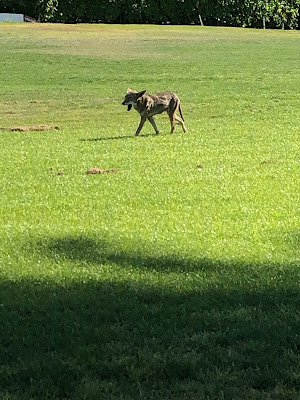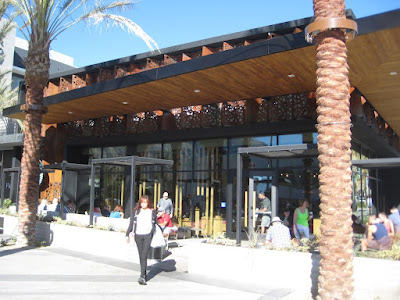The definition of collaboration is simple enough. ‘Collaboration is the
action of working with someone to produce or create something.’ Sounds simple
enough and therein lies the gaping black hole of potential failure. What isn’t
mentioned is the willingness of both parties to forgo personal ego and goals
for a shared vision and outcome. Give and take must be part of that equation if
any partnership or collaboration is going to work.
My experience up until now in the creation of music hasn’t been that
successful. Over the years, I’ve enlisted the support of different musicians in
creating a music for various writing ventures of mine. One of the first was a
music video for one of my first novels and another for incorporating music into
several of my plays.
Unfortunately, the outcome wasn’t very satisfying. I had envisioned
working with the musician to write the music, melody and lyrics and then
cooperate in the creation of different musical layers to fill in the bones of
the song.
The artists I was dealing with saw our relationship first, as a
solicitor of music (that would be me) and secondly, as a purveyor of music
(that would be them.) And never the twain shall meet or at least it never did
in my case.
Almost immediately, it became apparent that these musicians weren’t
open to suggestions about the pace, mood, form or function of the emotion I was
trying to capture for my work at the time. They saw themselves as creating the
product and I paid them for it and they kept all rights to their work. No
thanks to that.
 |
| Click here to buy AJ's album 'Town Boy' Click here to stream 'Town Boy' on Apple Music |
Fortunately, this pattern of one-sided venture-taking came to a halt with
my introduction to a very talented singer/songwriter who ‘got it’ in terms of
cooperation. The back story is simple enough.
My first job after college and a brief hiatus in Europe was with the
Minnesota Department of Public Health as a staff writer. My first ‘real’ job
came in the form of freelancing (for free) at the local public television
station, KTCA-TV. I was working on the crew at least five nights a week.
In retrospect, I understand now that it signaled the ending of my ‘Lost
Years’ and the beginning of a new life with a newfound partner in life and
love. Working at the station, first on crew and then as a producer/director was
fun, exciting and opened up a lifetime career in television and video
production work. It also introduced me to a host of colorful characters who
inhabited the studio chambers and work cubicles. Little did I know that it would
become a veritable cornucopia of storylines just waiting to be told.
Eventually it became the basis for one of my plays entitled: ‘PTV.’
After completing my manuscript, I knew something was missing. The music. Music
was a part of my life back then and still is. It also played a huge part on the
lives of my associates at the station. I wanted to capture the mood of that
period but with new songs instead of capturing the old ones we remembered. Thus
began the quest to find a musician or two that I could work with to create
these new/old songs of that period.
 |
| AJ Scheiber |
True collaboration is really about finding someone who shares your
vision for a project. Then working together to create that project to your
mutual satisfaction. In my case, it
turned out to be with a very talented singer/songwriter by the name of AJ Scheiber. AJ does both solo work and plays in a band by the name of Wilkinson James. I would describe his work as akin to John Prine and Tom Paxton.
After a couple of meetings and AJ reading the script for PTV, it became
apparent that he shared my vision for the play and the prominence of the songs
therein. He introduced me to many different styles of music such as Texas
Swing, Delta Blues, Chicago Blues, folk, Americana, Bluegrass, gospel,
Appalachian, and a host of other similar styles of songwriting.
We followed a very simple route of writing the songs. I wrote the
lyrics. AJ adapted, rewrote and tweaked the lyrics to fit into the rhythmic
pattern (melody) that he had created for that particular song. I then reviewed
his adaptation of my lyrics and if I felt they don’t fit the message I was
trying to convey, we discussed those particular words and came to some kind of
compromise. AJ got the words to fit his musical pattern and I was satisfied
with the words chosen.

AJ wrote out lead sheets for each particular song. Lead sheets are
tools used by songwriters to convey the basic structure of a song to musical
directors and arrangers. The fun part (in my mind) begins in the studio when
each song is layered with additional tracks of musical instruments. In my mind,
the arrangement is everything.
Since I have a vested interest in the mood each song must convey to my
audience, I see layering as critical to each song’s success in conveying that
mood. In PTV, each song was written as another emotional cue to help the
audience better understand my characters and their actions. It was imperative
that each song emit that emotional reaction from the audience.
The marketing of PTV has begun. Once we’ve received inquiries, AJ can
begin to upgrade our demonstrations of each song and share it with interested
theatrical venues through a file-sharing system. My job is to keep fishing and
hope to land a theatrical venue that can host the show.
I have no doubt that it will be a long and arduous process to find the
right venue for this play and then to produce it in the right manner. If we can
pull it off and the show resonates with the audience then the sweat, labor and
tears it took to get there will have been all worthwhile.
Not for the faint of heart but then anything of value seldom comes
easy.

















































